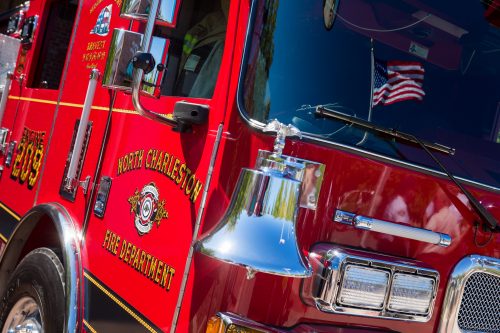 During the North Charleston Fire Department’s annual awards ceremony in December, firefighters were acknowledged for their part in saving 15 lives in 2019. All of the saves were cardiac related. What’s more interesting is that it was the largest number of saves ever recorded for North Charleston Fire Department. The partnership with Charleston County EMS and high-performance CPR is making the difference and saving lives.
During the North Charleston Fire Department’s annual awards ceremony in December, firefighters were acknowledged for their part in saving 15 lives in 2019. All of the saves were cardiac related. What’s more interesting is that it was the largest number of saves ever recorded for North Charleston Fire Department. The partnership with Charleston County EMS and high-performance CPR is making the difference and saving lives.
In September 2017, Charleston County EMS personnel providing training to North Charleston Fire Department and other local fire departments in High-Performance CPR. High-Performance Cardio-Pulmonary Resuscitation, or High-Performance CPR, is a performance-based approach to CPR that promotes coordination and communication among firefighters and EMS personnel. The approach focuses on accurate depth and rate of compressions, eliminated interruptions, controlled ventilations, and AED or heart monitor integration. Every responder has a designated position around the patient with a single responsibility. The chest compression position rotates every few minutes to ensure accurate depth and rate is maintained. Feedback on the quality of chest compressions is provided by the AED/heart monitor position, again ensuring quality performance.
This life-saving partnership between North Charleston Fire Department and Charleston County EMS is paying dividends. In 2017, NCFD participated in seven cardiac-arrest life saves. In 2018, NCFD participated in 12 cardiac-arrest life saves. And in 2019, NCFD participated in 15 cardiac-arrest life saves. “A firefighter’s mission is to save a life, and High-Performance CPR, along with a strong partnership with Charleston County EMS, is making that happen more often” said Fire Chief Greg Bulanow of the North Charleston Fire Department.
Citizens also play a critical role in survival. According to Doctor David French, Emergency Medicine Physician at MUSC and Director of the Lowcountry Resuscitation Alliance “During cardiac arrest, immediate CPR can double or triple a person’s chance of survival. But what we have found is that people are scared to perform CPR. Hands-only CPR makes it simple. Push hard and fast on the chest and you could save a life.”
